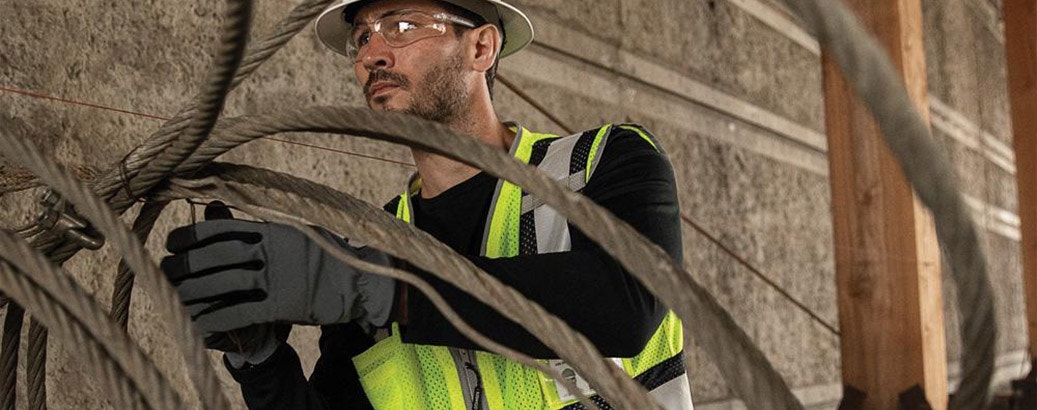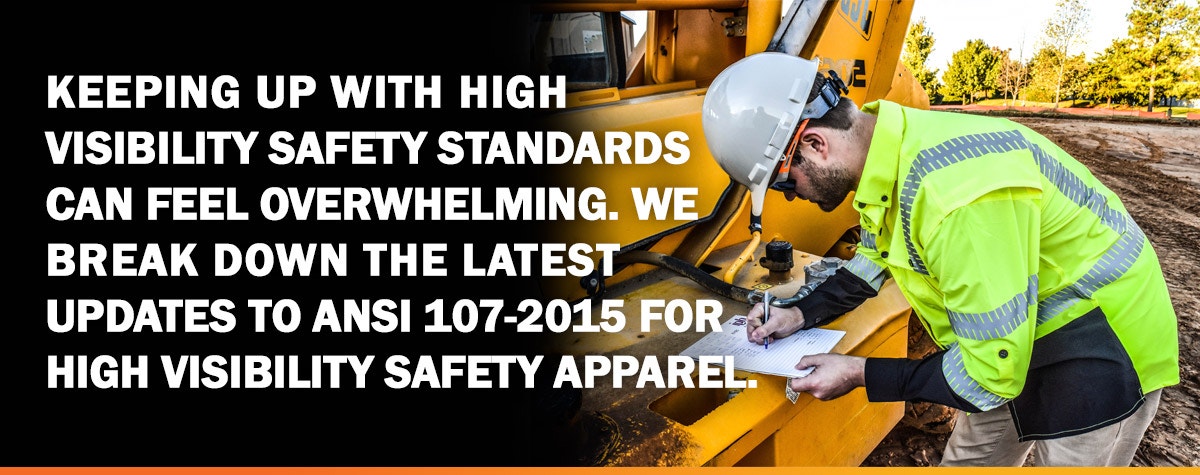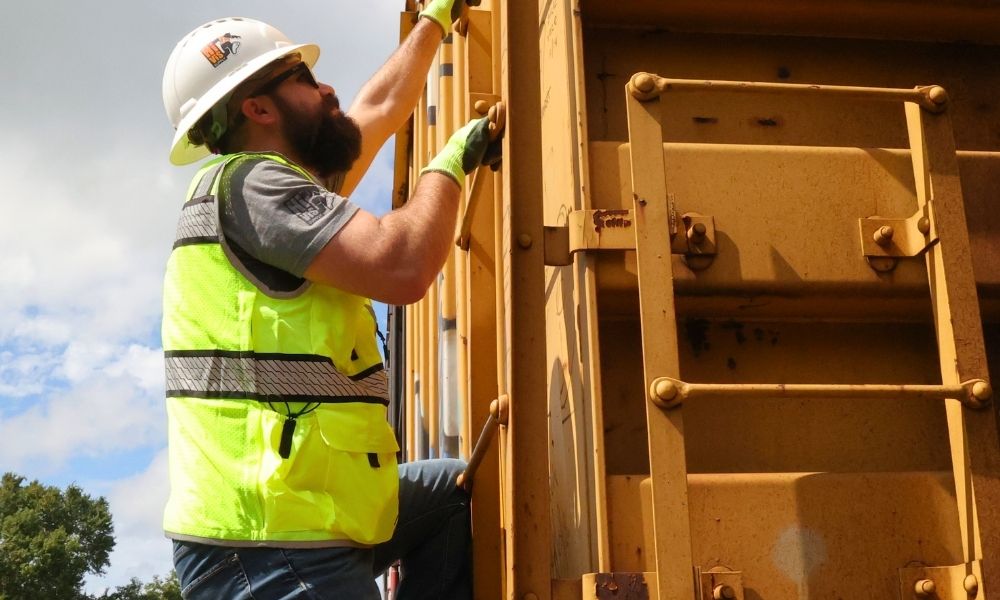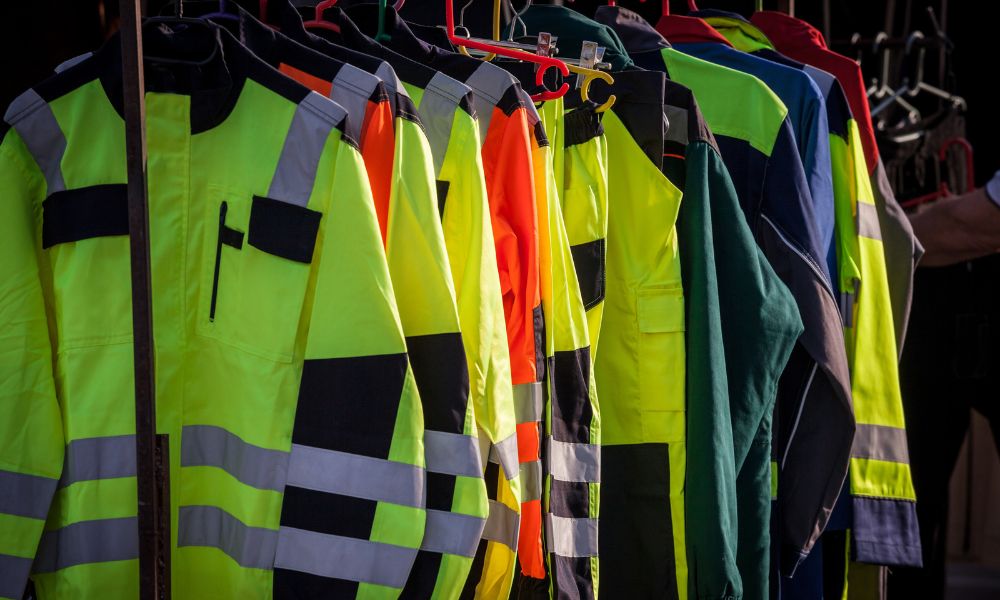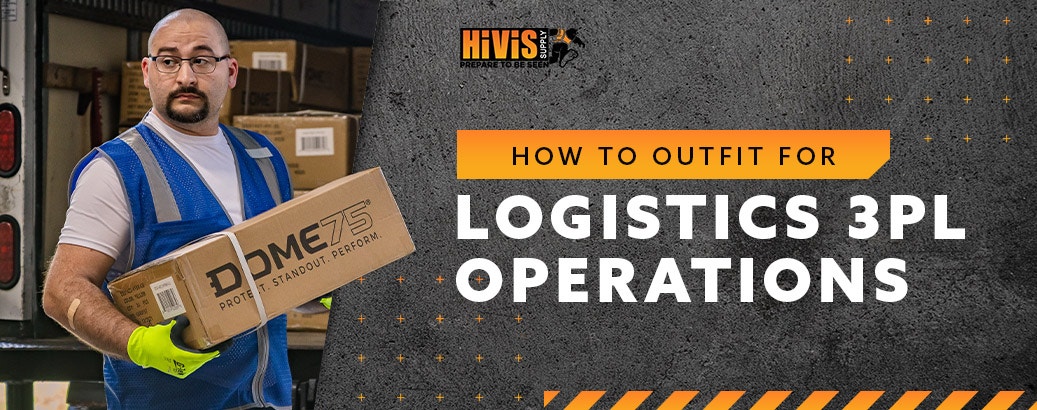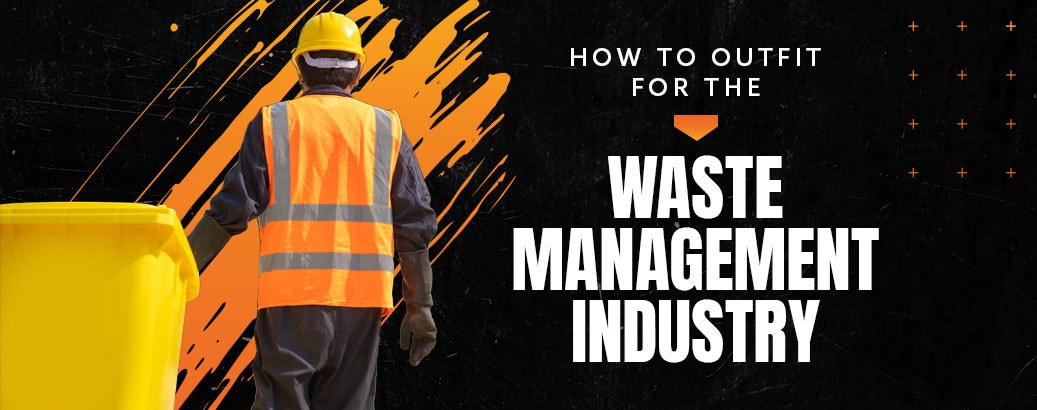Hi Vis Workwear 101: Why Is the ANSI Garment Label Important?
- By HiVis Supply
- Aug 9, 2021
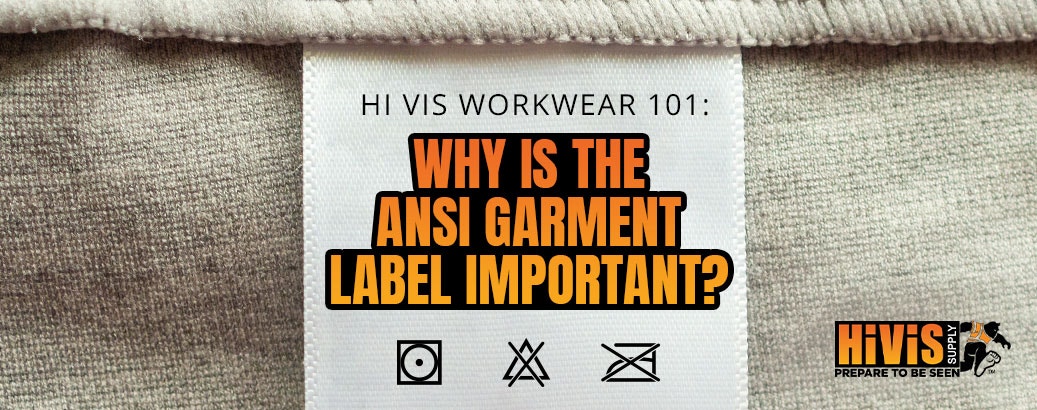
Many people don’t realize that there are many different standards that help organize our world by regulating various objects and processes. From vehicles to consumer electronics to high visibility garments, standards help make sure products are safe to use and effective at the job they’re designed to do. When you’re shopping for high visibility workwear, you’ll see a lot of discussion about the ANSI 107 standard. A little HiVis fun fact is that you'll also find a required ANSI garment label on any piece of clothing that is designed to meet the ANSI 107 standard. There’s a huge amount of information packed into this label that can be really useful for anyone who wears clothing with visibility features on the job.
Below, we’re going to break down the basics of ANSI compliant hi vis workwear and what the ANSI garment label on your hi vis garment can tell you. We’ll start at the beginning with a quick primer on how to understand the ANSI 107 standard, then talk about specific features of ANSI garment labels that will help you make the right workwear choices.
What Is ANSI?
ANSI is the American National Standards Institute, a non-profit group that helps develop and maintain standards for many different industries. These standards help ensure a basic level of safety and compatibility for businesses, products and services. Some especially important types of ANSI standards are the personal protective equipment (PPE) standards that define levels of protection that workers need from their protective gear.
ANSI 107-2020 is an especially important ANSI PPE standard that regulates high visibility clothing, and it’s used in a ton of different industries. Everyone from road construction crews to warehouse workers to first responders uses ANSI 107-rated high visibility clothing to protect themselves and stay visible on the job.

Understanding the ANSI 107 Standard
We cover everything you need to know about the ANSI 107 standard in detail in our ANSI 107 guide, but it’s worth doing a quick review here. Let’s check out some of the fundamentals of the ANSI 107 standard and make sure we’re all up to speed. ANSI 107 is specifically concerned with the visibility features that high visibility clothing needs to have. To be ANSI 107 compliant, hi vis workwear needs to have three basic qualities:
- Be Visible: The garment’s fabric has to be a high visibility fluorescent color such as green, yellow or orange.
- Be Reflective: The garment needs to have a certain amount of reflective material, such as reflective tape, permanently attached to it and positioned correctly.
- Be Tested: The garment needs to pass specific visibility and reflection tests designed by ANSI and performed by an independent third party tester.
Who Is Required to Wear ANSI 107 Clothing?
One category of workers is required by law to wear ANSI 107 hi vis gear on the job: people who work in or around roadways with direct exposure to traffic. The 2009 Manual of Uniform Traffic Control Devices (MUTCD) establishes this requirement in section 6E, and OSHA has clarified that it applies to basically everyone who works in a road work zone or directs traffic. In most other cases, ANSI 107 is a voluntary standard that employers follow as part of industry best practices. However, OSHA’s General Duty Clause does require employers to provide employees with a workplace that’s as safe as possible. In many cases, that means providing ANSI 107 compliant workwear on the job.

Why the ANSI Garment Label Matters
The ANSI garment label is an all-in-one source of information about any ANSI 107 rated piece of workwear. Examining the ANSI label will instantly inform you about the level of protection that this garment provides. That’s crucial, because you can’t afford to choose the wrong gear for the job. A thorough understanding of ANSI labels will allow you to make better choices when it comes to hi vis workwear. ANSI garment labels also provide care instructions that will inform you about how to care for your garment the right way. Proper care for hi vis garments is essential for keeping them in great shape and performing at the required level. You’ll find ANSI garment labels in all kinds of hi vis safety garments, including:
Checking Your Hi Vis Garments for a Label
When you purchase any piece of hi vis clothing, finding its ANSI garment label should be one of the first things you do. Look for it in the normal places you’d look for a clothing label, such as in the waistband or near the neck. What if you find a piece of clothing that has visibility features like reflective tape, but which doesn’t have an ANSI label? It’s probably a piece of non-ANSI enhanced visibility clothing. This workwear doesn’t conform to a particular ANSI standard, but it does have extra visibility features like reflective material and/or bright colors.
Non-ANSI enhanced visibility clothing is a great option for some applications. Color-coded enhanced visibility clothing that helps tell people apart is popular for job sites where different crews work together, and many businesses with a lower risk of struck-by accidents choose enhanced visibility garments due to their attractive price point. It's important to note that non-ANSI rated apparel is not required to have the same style ANSI garment label, but will often include a very similar label to provide information too. However, if your job site requires ANSI 107 compliant gear, enhanced visibility garments aren’t the right choice.

Three typical ANSI garment labels.
Left to right: An ANSI garment label for an ANSI 107 compliant non-FR garment, an ANSI garment label for an ANSI 107 compliant FR garment, and finally an ANSI garment label for an ANSI compliant single use garment.
Reading an ANSI Garment Label
In the next sections, we’ll show you how to read an ANSI garment label step by step. It’s easy once you understand which information is where and which sections are important for your job.
Manufacturer’s Name
The first line on an ANSI garment label tells you the clothing manufacturer’s name. This is important to know in case you need to contact the manufacturer with a question or concern. If you bought the garment from HiVis Supply, our customer service department will be happy to help you resolve your issue.
ANSI Standard Declaration
On the second line of the label, the manufacturer will declare to which ANSI standard they’ve designed the garment for compliance. ANSI/ISEA 107-2020 is the current ANSI high visibility standard, so look for that specific version of the standard to be called out on the label. Why does it matter? The 2020 version of the ANSI standards replaced the ANSI/ISEA 107-2015 standard and implemented several significant changes. The safest option is always to use workwear that’s compliant with the latest version of relevant ANSI standards.
Size
The garment’s ANSI tag should list its size, such as Medium or Large. Remember to always consult the size chart for a garment before ordering to make sure your workwear fits the way it should.
Garment Pictogram
The tag should also include a basic pictogram, either of the garment or a universal hi vis garment pictogram.
ANSI High Visibility Garment Types
In the next section, you’ll see one of the three different ANSI hi vis garment types listed. These types divide ANSI 107 compliant garments by the type of work that they’re intended for. They’re different from performance classes of ANSI garments, which we’ll talk about next. The types of ANSI high visibility garments are:

- Type O: For “off-road” applications without direct exposure to roadways or traffic over 25 mph. Warehouse work and mining are two common applications for Type O garments.
- Type R: For general applications with high exposure to traffic, such as roadway work.
- Type P: For public safety workers such as EMTs and law enforcement workers who need extra visibility in both daylight and night conditions, plus it has features like shorter-length jackets that provide easy access to belt-mounted accessories.
ANSI High Visibility Performance Classes
The ANSI garment types that we just discussed also have multiple subcategories known as performance classes. Each of these classes means that the garment satisfies a specific set of standards when it comes to keeping workers visible.
- Class 1: The lowest of the three main levels of ANSI 107 compliance. Class 1 clothing is always rated as Type O, meaning that it’s only suitable for off-road workers.
- Class 2: A higher level of ANSI 107 protection, and the lowest level that can be designated Type R or Type P. Workers who need MUTCD-compliant clothing need to choose an ANSI Class 2 or Class 3 garment.
- Class 3: The highest level of ANSI 107 protection, which can be either Type R or Type P. Typically used for jobs with the highest danger of struck-by accidents.
- Class E: Visibility accessories like hi vis pants. An ANSI Class E accessory, combined with an ANSI Class 2 or ANSI Class 3 garment, will create an ANSI Class 3 ensemble.
Model Number
The model number tells you which exact model of garment you have. Make sure to have this information on hand if you need to contact the manufacturer or seller about the garment.
Flame Resistance
Certain types of hi vis workwear also need to be built with flame resistant features that prevent the material from catching fire. See our flame resistant clothing guide to learn more about FR gear. If the garment is built to any FR or HRC standard, you’ll see it listed in this section. The line will include the letters FR followed by the relevant flame resistance standard that it satisfies, such as ASTM F1891. On the other hand, if the garment doesn’t have any FR qualities, you’ll see the phrase “Non FR” printed in this space.
A non-FR garment will also have the following warning listed on the label: “This garment is not flame resistant as defined by ANSI/ISEA 107-2020.” That doesn’t mean there’s anything wrong with it; it just means that if your job requires FR clothing, you’ll need to choose different hi vis workwear or layer a flame resistant garment on top of it during some tasks.

Care Instructions
The final part of the label gives you instructions for washing, drying and otherwise caring for the garment. That’s right — much like most garments, hi vis workwear items have care instructions on the label that will help you avoid accidental damage to your clothes.
First, you’ll see a series of pictograms. These use the international laundry care symbols to provide quick and easy-to-use care instructions. If you haven’t seen the symbols before, make sure to look them up first so you don’t misinterpret them — some are pretty abstract! Next comes a series of short care instructions that will give you the same information as the pictograms. Most hi vis garments have special care needs, such as not being able to be dry cleaned, so read these carefully. For more information about how to care for your hi vis workwear, see our hi vis clothing care tips.
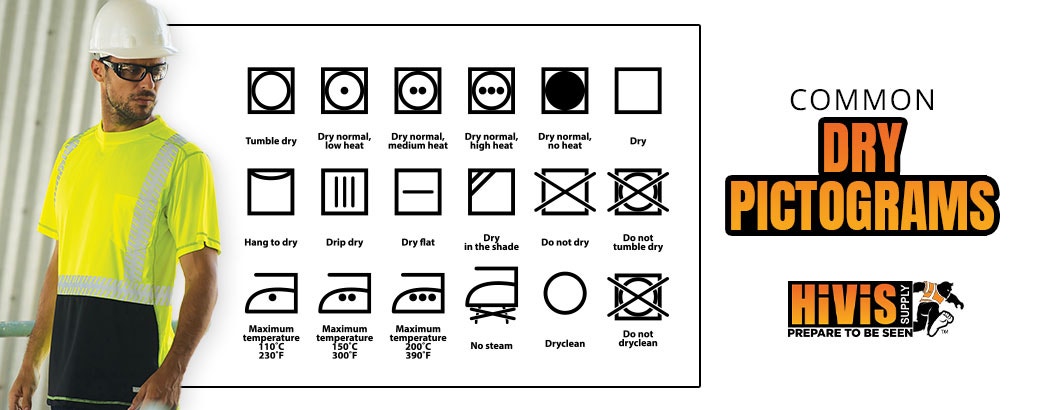
Disposable Garment Instructions
Finally, certain types of high visibility garments are designed as single-use disposable products. Single-use garments will have the following message at the bottom of their care labels:
- This garment meets the single-use disposable coverall requirements of ANSI/ISEA 107-2020, Section 11.
- SINGLE-USE ONLY.
- DO NOT REMOVE THIS LABEL
Navigating the world of hi vis requirements can be tough — and you already work hard enough, so let us give you a hand. HiVis Supply is a one-stop source for the facts on high visibility clothing, and we carry an industry-leading selection of hi vis workwear so you can find exactly what you need. Read more about the ANSI 107-2020 standard in our ANSI 107 guide, or browse our complete selection of hi vis safety gear for tons of ANSI compliant workwear options.


